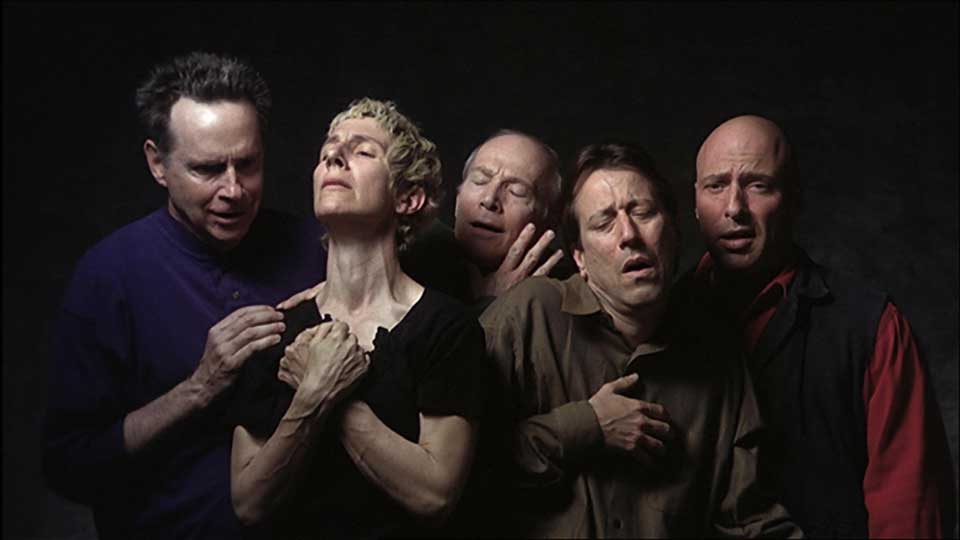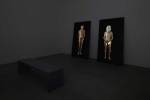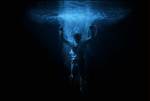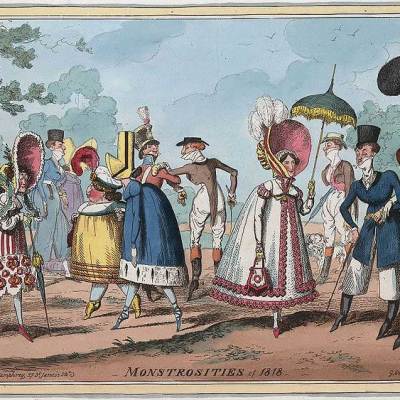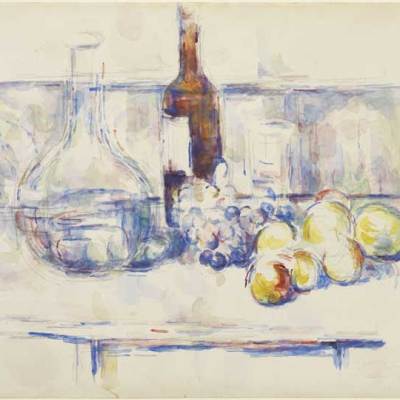The Bill Viola retrospective in Paris is the first major video art exhibition to be held in a national museum of France. In the hands of Viola there is something elemental to this high-tech medium. The dark galleries of the Grand Palais are illuminated by videos of water, fire, weather and universal human experience.
At the beginning of the exhibition, two installations challenge preconceptions of video art. Heaven and Earth consists of two old-fashioned TV sets facing each other, with only a small gap to view the screens. An image of a baby and an old person can be deciphered but the side-view of the flickering pictures on the convex screens doesn’t make it easy. In The Veiling, images are projected onto layers of translucent fabric, creating a series of misty, light-infused spaces, where narrative gives way to immersive experience. In both cases the visitor is drawn in, hoping to find answers, but is left to reflect on the mystery.
Reflection is an important part of experiencing Viola’s videos. In many of the installations time is slowed right down so that small movements are spread over minutes. The Grand Palais audience was captivated by the upward rain shower and levitation in Tristan’s Ascension, even though the action itself is predictable and projected in super-slow motion. Tristan’s Ascension was part of the ‘Tristan Project’, originally designed in 2004 as backdrop for Wagner’s opera Tristan und Isolde staged by Peter Sellars (and showing again at the Opera Bastille in April).
Similarly, The Quintet of the Astonished, from the ‘Quintet’ series of 2000 shows a group of people in a variety of anguished poses. At first it looks like a photograph, until you realise the expressions are changing almost imperceptibly slowly.
There is also a painterly quality to The Quintet of the Astonished. It is like a group portrait in chiaroscuro, with baroque emotions. In fact Viola’s work seems to mine the history of painting for influences, which he translates deftly into video art. Catherine’s room, a series of videos of a woman in the same room but in various positions and at different times of day, is reminiscent of the small-scale precision of Vermeer paintings, or a detailed predella from a Renaissance altarpiece.
Level two of the exhibition is biblical in tone. Man Searching for Immortality/Woman searching for Eternity shows a naked man and woman of advanced years inspecting their bodies with a small torch. The title makes the installation vaguely humorous, but the aesthetic – the stark white bodies against a black background – is reminiscent of Dürer’s Adam and Eve and the work makes similar allusions to mortality and humanity, albeit with a 21st-century twist. Three Women, showing the three ages of women emerging from an otherworldly grey rain shower, and Ascension, a man plunging into deep water, also have deeply spiritual overtones.
The exhibition ends with The Dreamers, a series of people shown submerged in water. They are lying under the surface of the water with their eyes closed but displayed upright, as if standing. There is something captivating about the installation. It is mysterious and meditative. As with the rest of the exhibition, it evokes questions but gives little in the way of an answer.
‘Bill Viola’ is at the Grand Palais, Paris, until 21 July 2014.
Bill Viola is interviewed by Jonathan Griffin in the March issue of Apollo. Click here to buy the issue.

